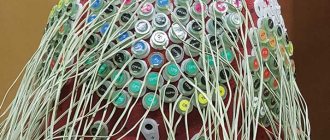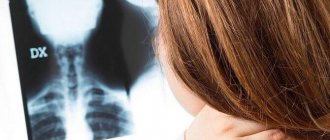Migraine (G43)
Migraine is defined by ICD-10 as a pathology accompanied by intense headaches. The exact cause of the disease has not yet been established, but it is known that it mainly occurs in adults, mainly females. This gradation is justified by the fact that women more often encounter hormonal changes in the course of their life. This happens monthly during menstruation, menopause and while pregnant.
In this case, migraine attacks are usually accompanied by the following main painful symptoms:
- severe weakness;
- nauseating feeling, vomiting;
- change in skin color, possible severe paleness or purpleness;
- unexpected changes in blood pressure;
- dizziness;
- difficulty breathing, lack of air;
- lack of appetite;
- loose stools;
- increased heart rate;
- confusion;
- it is unclear where sounds are coming from, the sensation of foreign objects in the ear canals;
- visual hallucinations.
Headaches may last for several days. To properly treat a patient, healthcare providers will need to identify migraines. The ICD 10 code will help you do this. Let us consider further how migraines are classified in accordance with the reference book, and what code is assigned to each type.
Symptoms
The nature of the attack of cephalgia during migraine with aura is no different from ordinary migraine. A throbbing or pressing headache usually affects only half of the head, accompanied by nausea, mild dizziness, and increased perception of sounds and light stimuli. Migraine with aura, like simple migraine, can have a prodrome in the form of changes in mood, drowsiness or increased excitability, frequent yawning, general weakness, etc. The main difference is the presence of an aura. However, the latter should not be confused with prodromal symptoms that appear several hours (sometimes 1-2 days) before a migraine attack. Typically, the disease is characterized by the appearance and increase of cephalalgia during the first hour after the disappearance of the symptoms of migraine aura. In some cases, aura symptoms reappear during the headache period, and sometimes persist even after the headache has stopped. An attack of cephalalgia can last from 4 hours to several days. After it, the patient feels some weakness and weakness. In other cases, he falls asleep and wakes up completely healthy, which happens more often in children.
Migraine without aura or simple migraine (G43.0)
Migraine without aura received code G43.0 according to ICD 10. The pathology is characterized by the fact that the attack begins without any preliminary signs. That is, the patient is not ready for severe, piercing pain. This significantly reduces the quality of life. After all, painful symptoms can catch a person at the most inopportune moment. For example, during an exam or during an important meeting at the workplace. In this case, you must always have quick-acting anti-migraine drugs with you, as well as use quick methods to reduce pain. For example:
- going to a darkened room will help;
- it is necessary to get rid of extraneous sounds, turn off the TV, radio, it is better to retire;
- if possible, you need to urgently open the windows, the flow of oxygen will help you come to your senses;
- A cool compress will relieve pain; to prepare it, you just need to moisten a clean cloth in table vinegar;
- if the attack worsens, you will need to lie down and try to sleep for at least a couple of hours.
Diagnostics
Patients with migraine attacks with aura are consulted by a neurologist. Its main diagnostic task is to exclude organic (intracerebral tumor, cyst, encephalitis) and vascular (TIA, dyscirculatory encephalopathy, ischemic stroke) brain pathology that can cause symptoms similar to migraine aura. For this purpose, a neurological examination, MRI or CT scan of the brain is performed; A consultation with an ophthalmologist is scheduled with determination of visual fields and ophthalmoscopy. An important point in diagnosing migraine with aura is electroencephalography (EEG), which allows obtaining data on the functional activity and individual characteristics of the bioelectric rhythm of the patient’s brain. EEG results are subsequently used when choosing drugs for drug therapy.
Migraine with aura or classic migraine (G43.1)
Unlike the previous type, migraine with aura makes itself known in advance. An aura can be expressed by the following symptoms:
- headache;
- circles, spots before the eyes;
- limb spasms;
- loss of strength;
- chills.
The duration of previous symptoms is short. Typically the aura lasts from forty minutes to one hour. It may appear after the attack has ended. Early diagnosis of the disease according to ICD 10 allows you to prevent the progression of the disease and development into more severe conditions. Typically, for this, the patient undergoes the following examinations:
- taking anamnesis;
- Ultrasound of the cardiovascular system;
- CT, MRI of the head region;
- radiography;
- laboratory blood tests.
After making a diagnosis, the medical professional will select the optimal course of treatment and give further recommendations for the prevention of pathology. Usually, for migraine G43.1 according to ICD 10, medications such as Betaserc, Nootropic, Tagista are prescribed.
Treatment
Migraine is a disease that does not have a specific treatment regimen. In some cases, painkillers Ibuprofen and Paracetamol help to cope with it. If the pain is not accompanied by fever, doctors may prescribe antiemetics for the gag reflex.
If the cause of migraine is high or low blood pressure, doctors prescribe a course of treatment to normalize it. Sometimes yoga, acupressure, and acupuncture therapy help relieve headache attacks. It is advisable to massage the head every hour during severe migraine attacks, massaging from the forehead to the back of the head.
It should be noted that this disease is quite difficult to treat, so only timely prevention of an attack or its alleviation is possible.
The following means are applicable for these purposes:
- Taking medications that constrict blood vessels - triptans (Migrenol, Cafergot, Dihydrergot spray, Imigran, Zolmitriptan, etc.). These remedies eliminate not only pain, but also nausea, vomiting, and fear of bright lights and sounds.
- Analgesics - acetylsalicylic acid (Aspirin), Analgin, Citramon, Ibuprofen, Naproxen, Diclofenac potassium, Paracetamol, etc. This group of drugs has an analgesic and anti-inflammatory effect. The effect appears within an hour.
Getting rid of the disease takes place in several stages:
- The first stage is the relief of an existing syndrome.
- The second is prevention to prevent relapse.
| Analgin | The maximum daily dose for children (10-14 years old) is 4 tablets, for adults – 8 tablets |
| Spasmalgon | For adults and children over 15 years of age: 1-2 tablets, 2-3 doses throughout the day, preferably after meals. For children - only with a doctor's prescription. |
| Pentalgin | 1 tablet up to 3 doses per day. |
| Tempalgin | 1 tablet 1-3 doses per day. |
| Spazgan | 1-2 tablets up to 4 times a day. |
Unfortunately, treating migraine is a rather long and expensive process. It should be said that the indication for hospitalization in a neurological hospital is only diagnosed complicated migraine and the presence of migraine status (duration of severe pain more than 72 hours); other cases are treated on an outpatient basis.
In an outpatient setting, you can use the complex effects of drug and non-drug therapy, normalization of the daily routine and lifestyle modification. Among the drugs used for migraine are vascular drugs, drugs that affect the serotonin system, non-steroidal anti-inflammatory drugs, and antiepileptic drugs.
National treatment guidelines
Many patients claim that there is no effective treatment - they are forced to constantly take medications to maintain a normal condition. This belief arises due to the possibility of relapse of the pathology after a long asymptomatic period.
Headaches appear due to improper treatment. It happens that patients are convinced of the vascular nature of the disease, and therefore try to cure themselves with antihypertensive and other drugs that act on the cardiovascular system, which explains the low effectiveness of treatment.
There is a specific treatment plan that helps hide the pain from the patient. This therapy can manifest itself in the regulation of nervous system activity. There are pharmacological drugs that help with headaches.
There are two ways to treat this condition:
- Providing emergency medical care when an attack occurs;
- Preventive actions;
When an attack occurs, it is important that the patient always has the appropriate medications with him, and also knows the code and name of his pathology, because sometimes it is possible to provide incorrect medical care - it can cause harm, which will worsen the further course of the disease.
Among pharmacological agents, paracetamol, non-steroidal anti-inflammatory drugs and triptans have gained particular popularity. The latest class of drugs appeared a little less than twenty years ago, but their effectiveness has been repeatedly confirmed.
Why are they so good? Triptans act simultaneously in several directions, which cannot be said about other drugs:
- Cause vasoconstriction of blood vessels of the brain;
- Affect noceceptors (pain receptors in the central nervous system);
- Inhibits the sensitivity of the trigeminal cranial nucleus, which helps relieve pain;
Treatment of migraine of any form is based on the elimination of irritating factors. Methods such as mental therapy, massage, hirudotherapy, and acupuncture are very popular. To relieve an attack, doctors prescribe the following medications: painkillers, triptans, antiemetics, beta blockers, antidepressants. Treatment begins only after confirmation of the diagnosis.
For attacks of mild to moderate severity, paracetamol, aspirin, and citramon help. The second category of drugs for the treatment of migraines are ergots. They have a powerful vasoconstrictor effect and relieve neurogenic inflammation. The third group is selective serotonin agonists, which act on serotonin receptors in brain vessels and relieve neurogenic inflammation.
specialist
There are medicinal and non-medicinal ways to help with migraine exacerbation.
Some people benefit from self-massage, hair washing, contrast showers or facial exercises, or prolonged sleep during the aura period. Such methods relieve only mild attacks of pain in the head.
Migraine, ICD 10 code G43 – classic, requires an integrated approach to treatment. Specialists select individually suitable drugs from the following medicinal groups:
- Soluble forms of Paracetamol or Ibuprofen are easy to use, and the peak of the maximum therapeutic effect occurs faster.
- Drugs from the subgroup of non-steroidal anti-inflammatory drugs - Nise, Diclofenac, Meloxicam, Airtal.
- Strictly prescription subgroup – Triptans.
- Combined drugs - Nomigren, Novomigren - the action is based on stimulation of the smooth muscles of intracranial vessels, narrowing their diameter, leading to a decrease in swelling of brain tissue.
All anti-migraine drugs should be prescribed only by a specialist, after diagnostic procedures have been carried out, when other serious pathologies of the human brain, also characterized by pain in the head, have been excluded. It is absolutely prohibited to independently change the volume and frequency of taking medications.
Migrainous status (G43.2)
If you ignore the signs of migraine attacks, they often become chronic. At first, headaches may occur once or twice a month, then their frequency increases. The patient experiences discomfort almost every day. The neglect of the disease leads to the fact that a person receives a diagnosis of “status migraine”. According to ICD 10, this type of pathology is assigned code G43.2. With this pathology, one migraine attack smoothly passes into another. Thus, painful symptoms accompany the patient constantly. This type of migraine cannot be treated at home; constant monitoring by medical professionals will be required. Migraine status according to ICD 10 is complicated by the following symptoms:
- dizziness;
- increased blood pressure;
- high body temperature;
- apathy, depression;
- insomnia;
- weight loss.
There are several favorable conditions for the development of status migraine. We list the main ones:
- unexpected surges in blood pressure;
- unstable psycho-emotional background;
- hormonal changes.
Therefore, to exclude the occurrence of disease G43.2 according to the ICD 10 reference book, it will be necessary to minimize provoking factors, as well as constantly monitor the health status.
Prevention
To prevent chronicity of the disease and improve the quality of life, preventive treatment of migraine is carried out, the goals of which are: reducing the duration, frequency and severity of attacks; reducing the impact of migraine on the patient’s daily life. The components of preventive treatment for migraine are selected individually for each patient, taking into account the pathogenetic mechanisms of the disease, provoking factors and emotional and personal disorders. The most widely used are beta-blockers (metoprolol, propranolol), antidepressants (amitriptyline, citalopram), calcium channel blockers (nimodipine), and NSAIDs (naproxen, acetylsalicylic acid). In modern medicine, non-drug methods (progressive muscle relaxation, psychotherapy, acupuncture) are increasingly used to prevent migraines.
Complicated migraine (G43.3)
Complicated migraine according to ICD 10 is defined as a condition that occurs after any type of migraine. At the end of the attack, unpleasant sensations appear. The difficulty is that in some cases, complicated migraine lasts at least several months. The pathology may drag on for years. There are cases when the patient suffers all his life. Disease G43.3 according to ICD 10 can develop into conditions such as migraine infarction or seizure. In the latter condition, the patient experiences such severe pain that the muscles of the body begin to contract involuntarily, and the person convulses. Such an attack can easily be confused with an epileptic seizure.
Root causes and triggering factors
The nature of the occurrence of migraine has not been fully studied by specialists. The main theory of its appearance is currently called the expansion of sections of the vascular wall in the structures of the brain. Also, the most important causes of migraine development include:
- Narrowing of the diameter of the alveoli, leading to a deterioration in blood supply to the brain.
- Expansion of areas of brain vessels and a significant decrease in their reactivity to carbon dioxide.
- Imbalance in vascular regulation of the central nervous system.
- Disorders based on serotonin deficiency.
- Fluctuations in individual pressure indicators.
Provoking negative factors leading to exacerbation of migraine:
- Physical and psycho-emotional overload.
- Spending a long period of time in a cramped, gas-filled room.
- Dehydration caused by something.
- Excessive passion for alcoholic beverages.
- Long-term use of hormonal contraception.
- Prolonged lack of a good night's rest.
- Consumption of certain foods (chocolate, nuts, citrus fruits, cheese).
Any of the listed factors or their combination can provoke the appearance of sudden pain in one of the areas of the head - the clinical picture of migraine.
Other migraine (G43.8)
According to the ICD 10 reference book, disease G43.8 is divided into two types. Each of them is described in more detail below.
Ophthalmoplegic migraine
This type of pathology can arise from any of the above. The fact is that with complications that arise during headache attacks, damage to the nerve endings leading to the eyeballs is possible. In this case, the patient experiences the following painful symptoms in accordance with ICD 10:
- blurred vision;
- severe pain in the eyes;
- uncontrolled sagging of the upper eyelid;
- unnatural pupil parameters.
The situation is complicated by the fact that with all the above unpleasant sensations, a person also uses other symptoms characteristic of migraine attacks.
Retinal migraine
This type of pathology can be found rarely. An attack occurs as a result of damage and disruption of the tone of the blood vessels that supply nutritional compounds to the retina of the eye. In this case, the organ of vision incorrectly perceives or ceases to capture light waves. Fragments of the image fall out of the patient's field of vision. So-called invisible zones are formed. Moreover, their sizes can vary significantly - from minor specks to half of the visible picture. In severe and advanced cases, a person may lose vision altogether.
Description
Migraine with aura.
Paroxysmal primary cephalgia, before the onset of which visual disturbances, disorders of the sensitive sphere or speech are observed. It differs from a simple migraine in that it occurs within 10-60 minutes. Before a headache and disappearing before its appearance, bright spots, lightning, dark or light spots in the eyes, distorted visual perception, slow or slurred speech, tingling or numbness of the limbs, auditory or olfactory hallucinations, paresis. Diagnosis of migraine with aura is based on neurological and ophthalmological examinations, EEG, MRI and CT scan of the brain. Treatment includes prevention and control of attacks.
G43.1 Migraine with aura [classical migraine]
Migraine, unspecified (G43.9)
The ICD 10 reference book includes such types of migraine as conditions that, in terms of symptoms, do not completely coincide with one of the above types. Such migraine attacks are usually caused by an NS disorder. Because unspecified migraines cannot be identified, their treatment can be difficult and lengthy.
The main thing to remember when faced with migraine of any type according to the ICD 10 reference book is that you should not leave a headache without proper attention. When the disease is left to chance, it actively progresses. Therefore, it is necessary to contact a health care institution as early as possible to receive qualified advice and undergo timely treatment.











